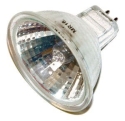If you find that watching your old movies on your 8mm or Super 8 projector is too awkward, or you are worried about damaging your original film, one option to consider is using a service to transfer your 8mm or Super 8 film to an electronic format. Such transfers are nothing new, of course. If has been very common since the 1980s for people to transfer their home movies to VHS format, for example. However, the rise of modern computer-compatible digital media introduces a number of new possibilities for transfer that can turn your film into a digital format you can use for years to come.
There are, however, a number of things to be concerned about when transferring your 8mm film to an electronic format. First, you should be aware that DVDs don’t have an indefinite shelf life. In fact, modern writeable DVDs last less time than your film footage itself probably will, even now. What this means is that, not only should you transfer your films to DVD, you need to back those DVD copies up. This process should be repeated every three years or so, so that when your original DVDs become corrupted, as they inevitably will, you won’t lose your files.
Secondly, DVDs will never be quite as high quality as your original film, even if you have it transferred in high definition format. Of course, you might be wondering, “Wait, aren’t HD movies much higher quality that my home movies?”, and you are right. But remember that your digital HDTV version will be a digital HDTV version of your home movie. In other words, it will be a picture of a picture, and not all the detail of even your home movie will be captured. Therefore, you should be sure to keep your original film after you have it transferred, so that you have a master copy you can use in the future in case film transfer technology improvies.
8mm and Super 8 film transfer can have a wide variety of costs, and these costs are usually related to two aspects of your final product. Depending on what you want to use your transferred film for, one or the other of these will be more important.
First, there is the level of definition of your final product. In general, high definition refers to 720p or 1080p (pixels) wide images. These are the most expensive available transfers, but they are definitely the best. Below this are any range of pixel width, all the way down to 400p or less. Since you’re creating a picture of a picture, higher definition is definitely something worth investing in, and given recent improvements in digital camera technology, it should not be exorbitant to reach at least 720p.
Second, the real cost, and perhaps worth it depending on your needs, is restoration. This restoration can take a number of forms, but the primary two are film cleaning and correcting film breakage. A lot of the reason that older films look “old” isn’t because the film is damaged, but simply because it is dirty. Having it cleaned is usually the least expensive restoration you can do. You can correct breakage in your film either simply on the DVD (they “correct” for it), or you can actually have broken film restored at the same time. Repairing broken film can be very expensive, but if you want to fix up your master copy at the same time, this may be worth the investment.
Another thing you can do is “special effects” on your home movies. Traditional 8mm film is entirely silent, as is most Super 8 film. As a result, you can do things like add music, add slow-motion sequences, add credits and so forth. Note, of course, that the more special effects you add, the less what you have produced is a copy of the original film. Another “effect” (and I have listed this here rather than under restoration) is color “correction”. Be aware that this is really color “enhancement”. They use a process to add colors to your images based on what the program thinks is more natural. This can make for very sharp color images, but it can also make your film look like a badly colorized movie. Make sure to see a sample before agreeing to do this, as colorization skill varies widely from merchant to merchant.
I hope this guide has been helpful in choosing the 8mm transfer service that is right for you. Film transfer is a great way to conveniently enjoy your home movies.



